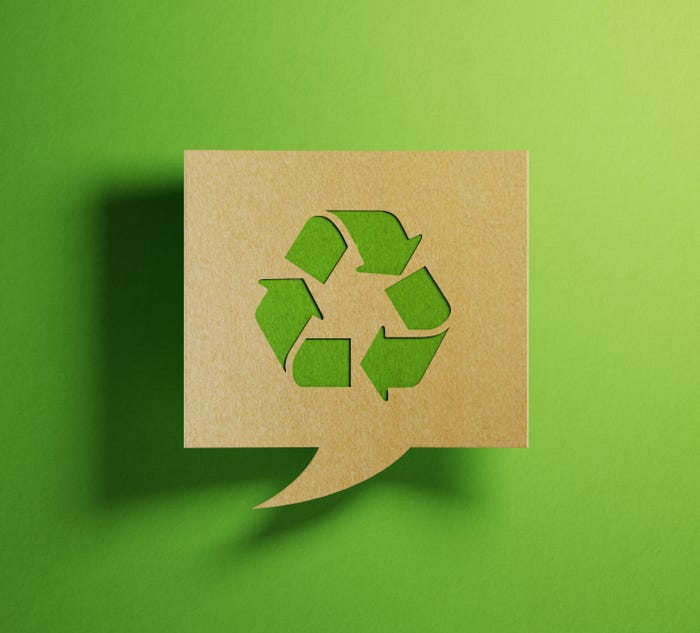Can Paper Packaging Outperform Plastic for Foods?
Let’s see if the numbers add up to prove that paper packaging is the best sustainable choice for food products.

The impact of plastic waste on the environment has become a pressing global issue, and the food industry has been a significant contributor to the problem.
In recent years, there has been a growing interest in paper-based alternatives to plastic for food packaging. Nestlé, for example, recently announced a packaging makeover for one of its most recognizable products, KitKat. And earlier, it had switched over its entire line of Smarties to paper packaging.
Paper-based packaging is typically thought of a more sustainable alternative to plastic since it is biodegradable and can be recycled or composted. But can paper-based food packaging outperform plastic in terms of functionality, cost-effectiveness, and durability?
In this article, I explore whether paper alternatives are the best long-term solution over traditional plastic packaging.
Food products need adequate protection and preservation from paper packaging.
Paper-based packaging has come leaps and bounds in recent years for preserving food products.
Corrugated board, for example, has become a popular option for transporting fresh produce like fruit and vegetables. The process required to bond its layers kills bacteria at high temperatures and its recyclability discourages repeated use, reducing the risk of cross-contamination.
Many manufacturers have also begun using aseptic paper packaging in recent years, which is created when both the food products and packaging are sterilized through a heated hydrogen peroxide bath. This keeps products like milk, coffee, and fruits and vegetables fresher for longer since there is no possibility of pathogens making it into the products.

However, paper packaging for food products is usually laminated with layers of aluminum or plastic to act as a barrier against oxygen and water vapor. Paper also makes up around 26% of landfill waste, despite being very recyclable and reusable. This somewhat discredits the sustainability of paper packaging.
So, while at first glance paper-based packaging alternatives might seem like the most sustainable option, brands will need to think carefully about whether paper packaging’s sustainability credentials will offset other challenges.
Is paper packaging more profitable?
Plastic is an appealing option for manufacturers, being the cheapest of all common packaging materials to make. One study found that it takes 3.4 times as much energy to make 1,000 paper bags than plastic bags.
However, the commitment of younger consumers to fighting climate change has increased the demand for paper packaging. According to a recent survey, 86% of consumers under 45 are willing to pay more for sustainably packaged products.
In April 2022, the UK introduced a plastic packaging tax (PPT), which has also been introduced in many EU countries, including Italy and Spain. Any plastic packaging with less than 30% recycled plastic manufactured or imported into the UK is taxed at £200 per tonne.
And the US could follow these countries by introducing its own PPT, which would discourage manufacturers from using such materials and reduce plastic pollution in the long term.
A widespread ban on single-use plastics may also be implemented. There have been small steps towards this, such as the US Interior Department’s plans to phase out the sale of single-use plastic products in national parks and other public lands by 2032.
Overall, these measures would make recyclable alternatives like paper-based packaging more appealing.

How well does paper packaging maintain brand identity?
A recent global survey found that 75% of companies have committed to sustainable packaging. While sustainability is important, companies must ensure this doesn’t jeopardize the design or accessibility of its packaging.
Packaging must be easy for customers to use, and this should be the priority when selecting sustainable packaging for products.
Likewise, choosing a material that hinders the style of the brand could cause a backlash. One example of this was when Nestlé changed its Quality Street wrappers to be more eco-friendly, resulting in a dull color that outraged fans.
Paper packaging isn’t the only sustainable option for foods.
Paper is one of the easiest materials to recycle, with a 68.2% recycle rate in the US. Despite this, just 20.8% of paper containers and packaging are recycled. As mentioned previously, over a quarter of landfill waste is made up of paper materials.
This is partly caused by the issue of “wishcycling” — the disposal of waste items that cannot be recycled in the recycling bin. While this is done with good intentions, in the hopes that these items will be recycled, it has the opposite effect.
Wishcycling is either non-recyclable waste or recyclable waste that is contaminated. Items can only be recycled if they are free from residue such as food, and paper food packaging is particularly at risk because it’s often harder to clean than plastic or glass containers.

There have been many other advances in sustainable packaging materials. Compostable corn starch can now be used for plates and trays, serving as a great alternative to polystyrene takeaway boxes that would otherwise be sent to landfill.
Even mushrooms and avocado seeds can make packaging, with the possibility of turning avocado seeds into a plastic replacement. These are all biodegradable and even compostable, requiring far less space after use than traditional plastic packaging.
So, can paper packaging outperform plastic for foods?
Paper is a useful packaging material, but companies can be more creative and open-minded in their search for eco-friendly alternatives to plastic.
The future holds an array of advances in sustainable materials that will see many changes in the way food is packaged. However, until new technologies can be thoroughly tested in a practical sense, it will be some time before the industry experiences widespread uptake of 100% alternative food packaging materials.
About the Author(s)
You May Also Like




